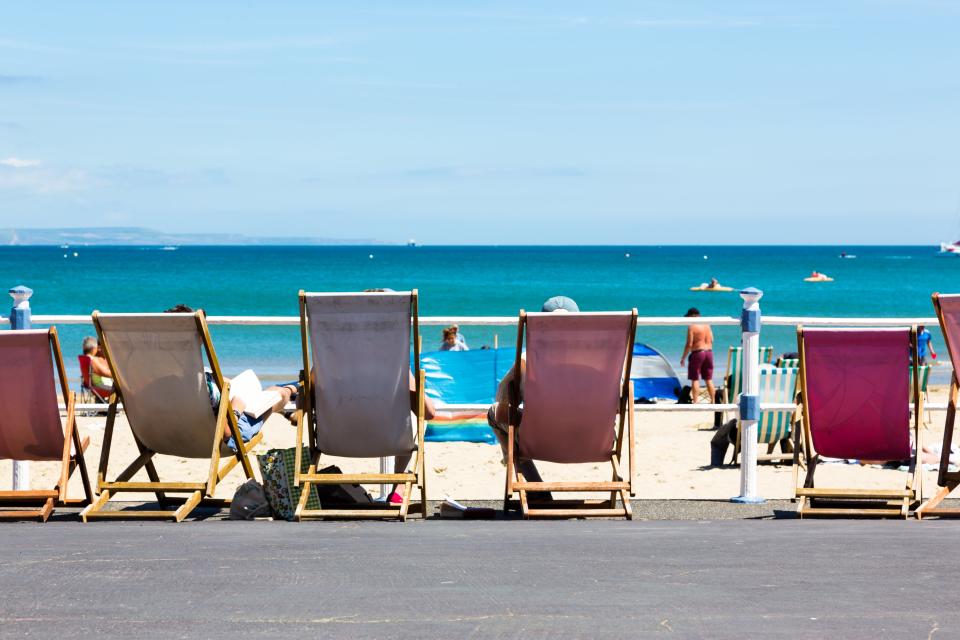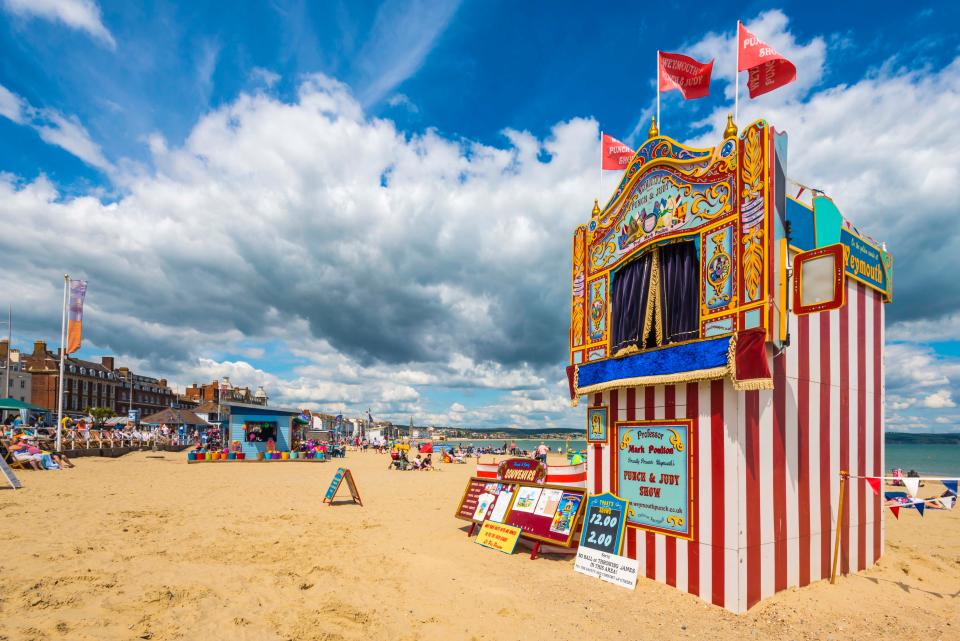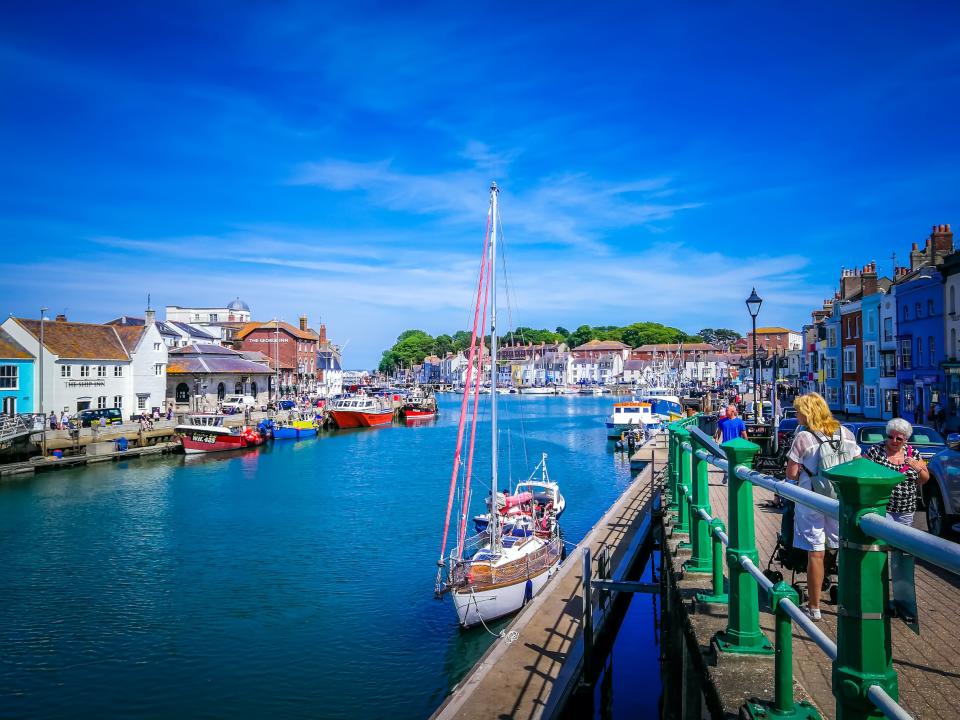Why Weymouth beats Bournemouth every time

Weymouth celebrates an important historic anniversary this year: in 1571, 450 years ago, Elizabeth I commanded the joining of two separate parishes north and south of the harbour, creating the Weymouth we know today.
It sits on one of Britain’s most beautiful bays, lapped by sheltered, gently shelving sea, with sand as soft as caster sugar. Lie back, wiggle your toes and imagine you’re on the Med. On the hottest days, in the early evening, pony owners bring their steeds to cool down and paddle-boarders make their way across glassy-flat water, which ripples like pink silk. The town is much prettier than Bournemouth and its harbour inlet is lined by restaurants and bars in chalky-hued Georgian houses. Cruise ships dot the horizon like seaworthy blocks of flats.
The resort is perfectly perched for exploring the Jurassic Coast, close to Chesil Beach and the Isle of Portland, and only nine miles from Durdle Door, along a wonderful section of the South West Coastal Path. It was made popular by George III (who’d been prescribed sea bathing to improve his mental health) and this was also Thomas Hardy’s favourite getaway. Today, it’s much as photographer Martin Parr captured it 20 years ago in his series This Is England: all rosy tan lines, statement tattoos and elderly snoozers outside beach huts. There are donkey rides and Punch & Judy on the sands.

Trips from here along the coast pass smugglers’ caves, chalky outcrops and arches, with outfits such as Coastal Cruises, which uses little, repurposed Second World War boats for trips along the Jurassic Coast (£15) or the ferry (£10) to the Isle of Portland. The Sealife Centre is about a mile from Weymouth main beach. Although slightly scruffy, it’s a treat, with lots of space and greenery as well as aquariums, otters, seals, penguins and a slightly bewildering Octonauts trail. At nearby Sandworld, artists spend weeks sculpting the extra-fine local sand into fantastical tableaux, from Marvel Comics’ Avengers to intricate scaly monsters.
For the seaside staple of fish and chips, Weymouth’s most famous chippy is Marlboro – family-run for three generations – but Bennett’s has harbourside tables to dine on its steaming white fish encased in crunchy batter. On the other side of the inlet, Les Enfants Terribles is overseen by the ebullient Eric, Dorset Food & Drink Awards’ Chef of the Year 2020, who is French and has come here via Dubai. He serves up fresh local oysters, delicious gazpacho with crab and baked sea bass.

South of the harbour, there’s the hulking bulk of Nothe Fort, with vast views over a periwinkle sea. It was built in 1860 to protect the naval harbour. Part of it was repurposed during the Cold War as a nuclear bunker. From here it’s a top-of-the-world 2½-mile walk (three miles by road) along the South West Coastal Path to otherworldly Chesil Beach, which is lapped by gin-clear sea rattling the stones like ice in a glass. The beach pebbles are worn smooth as eggs and reduce in size the further you walk along the pristine 18-mile stretch; it’s said that smugglers used to be able to tell where they’d landed by picking up a handful. Currents are too strong for swimming here but it's great for examining pebbles, contemplating geology and birdwatching over the brackish lagoon.

From Chesil there’s a causeway to the Isle of Portland, a limestone chunk topped by a 9½-mile loop of the South West Coastal Path. Stone quarried from here was used to rebuild London after the Great Fire, St Paul’s Cathedral, thousands of Second World War gravestones and the Whitehall Cenotaph; it’s surprising there’s any island left. Portland Bill lighthouse has astounding views and overlooks a dramatic stretch of coast, including the “Pulpit”, a rock outcrop with steps carved into it for the brave. Almost hiding nearby is Tout Quarry Sculpture Park in a disused quarry, with 60 sculptures, including Anthony Gormley’s Falling Man, a graceful Icarus-like swoop carved into the rock.
Returning to town, classically churlish assistants serve dollops of Rossi’s ice cream, from a booth set up by an Italian immigrant in 1937, or you can have a local conker gin or Chesil lager at the Sandbar or Boat Cafe (with regular live music) on the waterfront. Beach-goers sit behind striped windbreakers. Harbourside pubs begin to fill, overlooking views as pretty as Copenhagen’s Nyhaven. Skaters, mobility scooters, strollers and cyclists trundle the long promenade as others sit and look out to sea. It is mirror flat, as calm as a lake. For old-school British holiday fun, Weymouth is hard to top.
Travel essentials
Staying there
There’s a line of B&Bs in Victorian townhouses a few paces from the beach, including friendly Gresham Guest House, with comfortable, unfussy rooms, some with sea views, and thoughtful extra touches such as beach towels and toys to borrow. Doubles from £80, B&B.
Also sea facing, the Gloucester House has rooms decorated with little flourishes such as flock wallpaper or Orla Kiely fabrics. Doubles from £150, B&B.
For somewhere grander, there’s Georgian Moonfleet Manor, 2½ miles west of Weymouth in the village of Fleet, with manicured lawns on the banks of the brackish Fleet Lagoon. Doubles from £159, B&B.
Visiting there
Read More
Beaches, Bolly buses and a big ship: A road trip from Belfast to Derry
Welcome to my home town: I never thought I’d miss London’s faceless crowds – until the pandemic hit
Why St Davids is Wales’ rising eco star
Welcome to my home town: How Scarborough imbued me with a need for the sea
Art and murder in Margate: how Eliot, Turner and Emin put one town back on the map

 Yahoo News
Yahoo News 